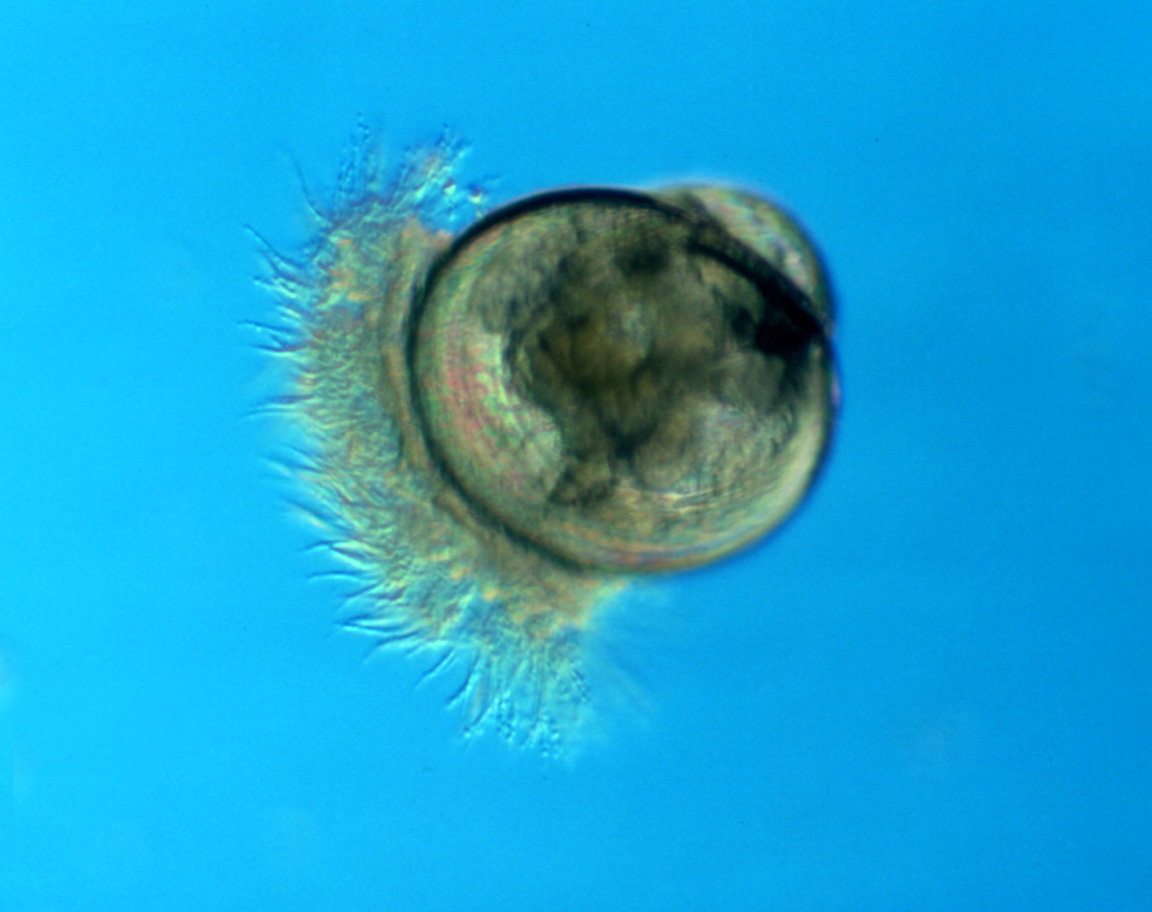Dear Michel,
Mollusks, from land snails and slugs to oysters and mussels in the sea, have a few things in common. They have a head. They have a soft middle part that holds their organs. Then, some have a muscle that’s known as a “foot.”
 This foot helps mollusks dig and attach to rocks. It also helps them travel, but not very fast. When the mollusks are young tiny things floating in the ocean, that’s when they really start to move.
This foot helps mollusks dig and attach to rocks. It also helps them travel, but not very fast. When the mollusks are young tiny things floating in the ocean, that’s when they really start to move.
A young mollusk is called a larva. At this point, the creature is so small you’d need a microscope to see it. The larva releases a kind of calcium from itself. Just as calcium helps your bones stay strong, it helps the larva build a strong shell, too.
That’s what I learned from my friend Yolimar Rivera Vázquez. She is a marine biologist who works at Washington State University. She especially likes visiting the tide pools on the Olympic Peninsula.
She told me that a larva has tiny little hairs. These hairs are called velum. A larva will use its velum to reach out and grab small particles of food from the sea. As they reach out their hairs, this motion also helps them swim a little. Because the larva is so small, the ocean’s current and tides have also help mollusks become so widespread, Rivera Vázquez explained.

“So you can imagine, that the tiny shell–because it is a little different from the full-grown adult shells–won’t be so hard to ‘carry,’” she said.
As a larva is carried across the ocean in the currents, it will keep creating calcium layers until it can make a shell that is full-sized. But not all mollusks have heavy shells. Cephalopods, which include cuttlefish, squids and octopods, don’t have shells, but they are part of the mollusk family.
“The exception is a cool-looking cephalopod called the nautilus,” said Rivera Vázquez. This sea creature has a smooth white, spiral shell and brownish, zebra-like stripes.
Rivera Vázquez explained that the cuttlefish, squids, and octopods have changed the form of their bodies over millions of years. It happened through a process scientists call evolution.
“Instead of keeping a heavy outside shell, these cephalopods developed a bony structure inside which used to be the shell. Or they have no shell remaining at all,” she said. “This is why they are such good swimmers.”
The shell-less swimmers can move fast, which can help them escape danger and spread their species, but there’s a benefit to being a slower moving mollusk, too.
Their shell provides protection and they can hang onto rocks with their foot. Their shells are hard enough that they help protect the shore from the impact of harsh waves. These shellfish also help clean the ocean and keep it healthy. With 50,000 species of mollusks, there are all kinds of creatures, many moving ever so slowly, through the ocean.
Sincerely,
Dr. Universe
Get Dr. Universe’s Monday Cat Mail in your inbox. Subscribe here.